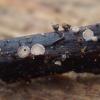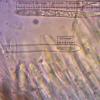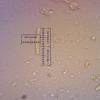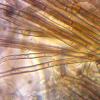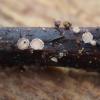
09-03-2013 19:56
 Edit Szilvásy
Edit Szilvásy
Dear Forum, I found today this little ascomycota.

09-03-2013 17:27
Nina FilippovaGnomonia chamaemori (Gnomoniopsis chamaemori) Thi

08-03-2013 12:29
Nina FilippovaGood day.Mycosphaerella bacillifera ?I have come t

08-03-2013 12:59
 Björn Wergen
Björn Wergen
Hi there,I am looking for this article:Dulymamode,

07-03-2013 17:39
Nina FilippovaHello. Perithecioid fungi is tabula rasa for me,

06-03-2013 10:56
 Yannick Mourgues
Yannick Mourgues
Je cherche la description de Melanomma britzelmayr

07-03-2013 19:49
Nina FilippovaCompared with the description in Hawksworth, Sivan

07-03-2013 19:48
 Edit Szilvásy
Edit Szilvásy
Dear Forum, Last week I have collected these fun
Brown haired Ascomycota
Edit Szilvásy,
09-03-2013 19:56
 Dear Forum,
Dear Forum, I found today this little ascomycota. It is on bark of a small branch of deciduous wood.?
I think Lachnum sp.
Can you help me?
Thanks for any ideas .
Edit
Hans-Otto Baral,
09-03-2013 20:44

Re : Brown haired Ascomycota
Lasiobelonium, and probably L. variegatun. This species has strongly undulating long hairs on the underside of the apothecia. Could you please have a look?
Zotto
Zotto
Edit Szilvásy,
09-03-2013 21:07

Re : Brown haired Ascomycota
Dear Zotto, :-)
I have tried to show the hair, on fourth picture.
It was long, filled my small screen.
Thank you very much for your help, at least I got to know the Lasiobelonium species.
Regards: Edit
I have tried to show the hair, on fourth picture.
It was long, filled my small screen.
Thank you very much for your help, at least I got to know the Lasiobelonium species.
Regards: Edit
Hans-Otto Baral,
09-03-2013 21:21

Re : Brown haired Ascomycota
I meant the hairs on the lower flanks. Those you figured are probably from the margin, and these are straight in this species.
Edit Szilvásy,
09-03-2013 21:34

Re : Brown haired Ascomycota
Oh, I'm sorry to not have thought of such a thing. The little twig thrown out into the garden, there is a good place to be.
Thank you again for your attention.
Have a nice evening.
Thank you again for your attention.
Have a nice evening.
